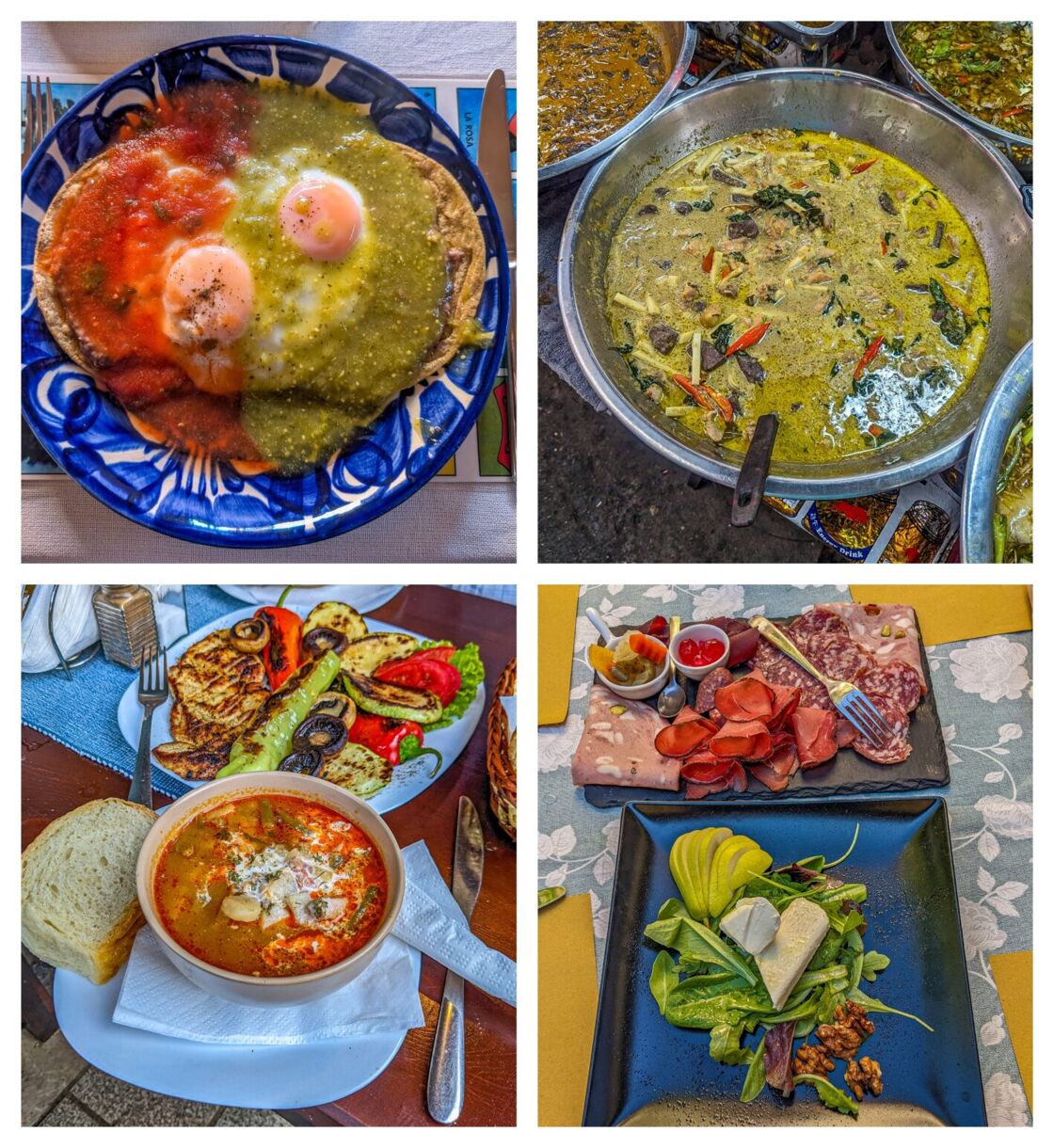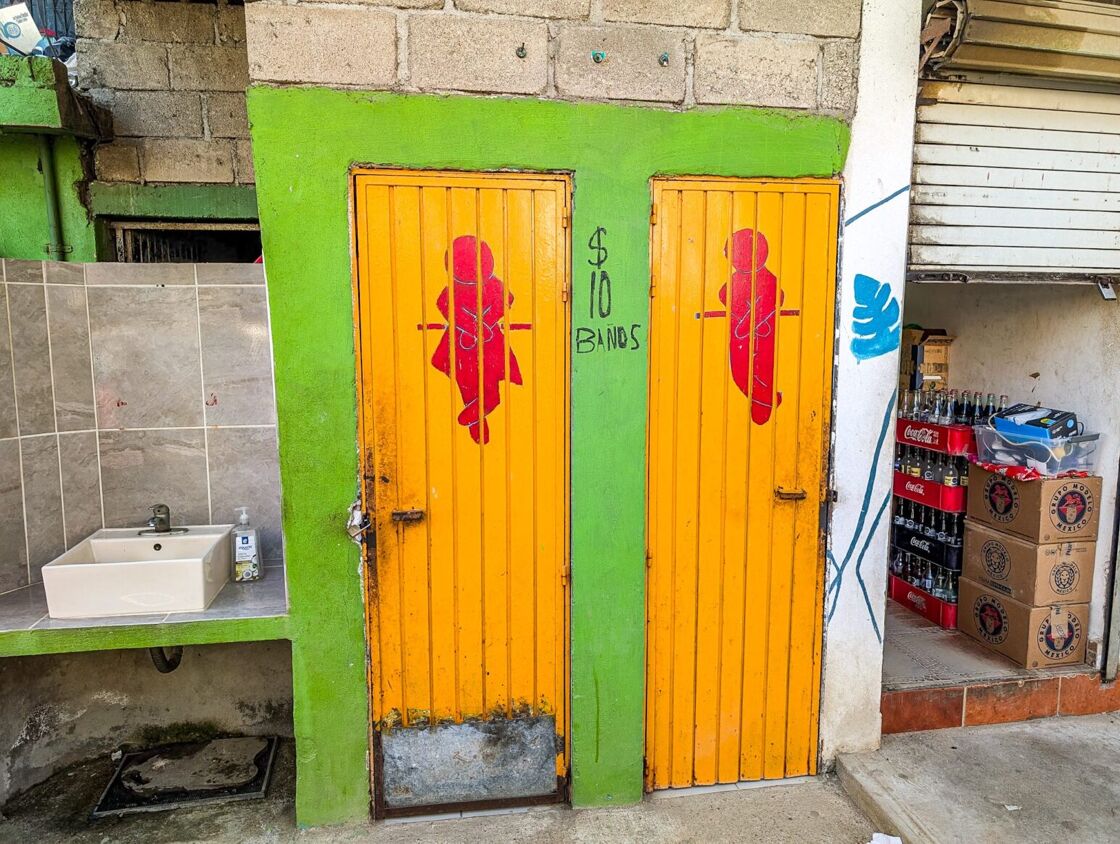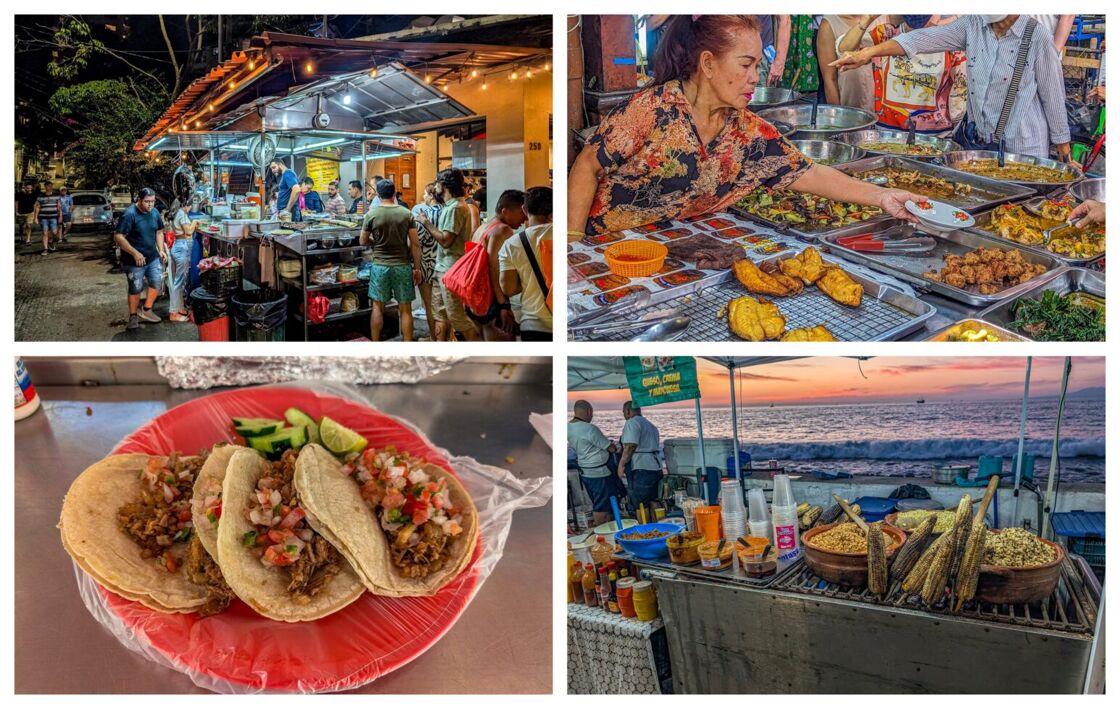Are restaurants better in America or in other countries?
I prefer the dining experience outside of America. Maybe it’s partly the novelty and my privilege, but I enjoy the best of both worlds.

I promise this isn’t yet another article saying how it costs three dollars to eat out while traveling the world as a digital nomad. Well, it’s not only that.
A couple of weeks ago, my husband, Michael, wrote about how “shopping” is often very different outside of America. Eating out in restaurants is very different too.
Yes, I’m making generalizations. “Outside of America” is a lot of very different places!
Pack your bags, we’re going on an adventure
Subscribe to our weekly newsletter for the best LGBTQ+ travel guides, stories, and more.
Subscribe to our Newsletter today
This is a regular feature about where we currently are in the world: how we ended up there, what it costs, and exactly what we think. Subscribe to our free travel newsletter here.
Yet restaurants outside of America are often very different from America’s eateries in very specific, very similar ways.
The Food
What’s the most important part of the restaurant experience? You might say the food. And I know you’re thinking, Oh, Brent is obviously going to say that food is much better in restaurants outside of America!
And, er, I do think that. We’d been living in Thailand for a month, eating out almost daily, before we finally had a bad meal. The best bread I’ve still ever eaten is lavash bread fresh from a conical clay “tonir” oven in Armenia.
But I’d also like to think I’m fair-minded. When it comes to “food,” American restaurants have a clear edge in one area: while most countries do their traditional cuisines incredibly well, no country I’ve ever lived in has America’s incredible variety of cuisines.

Also, part of the reason why so much of the food in other countries is so good is that it is traditional cuisine. But that means local chefs can be hidebound and ridiculously conservative. I once saw an Italian react furiously to the idea that tiramisu could ever be made with anything other than mascarpone cheese.
Americans, meanwhile, are endlessly willing to innovate. Sure, sometimes the result is deep-fried Twinkies, but sometimes it’s deep-dish pizza or jambalaya.
My Verdict: An unexpected tie.
Hospitality
Incidentally, I’m not entirely sure that the food is the most critical part of the restaurant experience. Just as important is the ambiance and the whole “hospitality” of the venue.
When you eat out at a restaurant in America, you’ll probably be welcomed fairly warmly by your server, who might even introduce themself by name, and they’ll also probably be attentive throughout the meal. Ice water is free.
On the other hand, once you stop ordering food, you’ll be delivered your check, indicating it’s time for you to leave. And if you don’t go, you’ll get an increasingly impatient or cold shoulder from the server, especially if the restaurant is crowded.
Because American waiters work for tips, you might feel pressure from the server to order more expensive items, with subtle “upselling.” You’ll also feel pressure to leave a large tip, with some restaurants even going to ridiculous lengths to shame you out of more money, setting the lowest “suggested” tip on the credit card machine at 25%.
Meanwhile, when you eat at a restaurant outside of America, tips are way less important, and as a result, service will probably be functional if a little less attentive. I’ve never had a server introduce themselves by name, and water generally isn’t free, although a bottle usually only costs about a buck.
But I’ve also never felt a hint of pressure to leave a restaurant before I’m ready, not even after some epic, four-hour dinners with friends; to get the check, you generally have to request it with a slight wave to the server. And I’ve never felt the slightest pressure to order something more expensive or even necessarily leave any tip, much less one larger than I may have planned.

What are all these differences about? Frankly, I think it’s a question of cultural values. The most important thing in America is making money and the bottom line; outside of America, it’s more about the quality of life.
My Verdict: Save your insincere familiarity, I prefer the genuine hospitality of restaurants outside of America.
Accessibility
I’ve never eaten at a restaurant anywhere that doesn’t have some kind of restroom — although I’ve seen some absolute doozies, buried deep in the bowels of musty old buildings or high up in creaky attics.
On one hand, this all makes sense — buildings tend to be older outside of America — and I enjoy the adventure of finding these oh-so-quirky bathrooms.
On the other hand, I also always think, “Man, my elderly and disabled friends could never eat in this restaurant.”

Likewise, when it comes to dietary intolerances or allergies, there’s often more awareness than I expected outside of America — sometimes even in surprising places, like Italy, where it’s fairly easy to find gluten-free pizzas and pastas, and cheese alternatives for the lactose-intolerant.
At the same time, awareness is nothing like it is in America. This is also a question of fundamental values, and it’s one place where America truly excels (at least for the time being—the current president wants to change this, too).
My Verdict: America by a mile.
Price
Yes, Americans are utterly sick of hearing how much cheaper it is to eat out as a digital nomad.
Also, it’s always important to note that what’s “cheap” for me, an American, isn’t necessarily inexpensive for the locals, who tend to have much lower wages.
But hey, here in Mexico, Michael and I had a nice dinner out with two friends last Saturday night at a mid-range restaurant with a charming little courtyard. It was just over a thousand pesos—$52 USD, or $13 a person, including alcohol and a tip.
It’s always possible to spend more, of course — and in “tourist” areas, the prices will always be higher. And in more developed countries, prices are higher still.
That said, a Dutch woman and a Canadian man have recently said to me, on two separate occasions, “The prices at American restaurants have become outrageous!”
And it isn’t just about recent inflation. When Michael and I spent four months living all over the UK last year, restaurant prices seemed considerably cheaper than those in the United States. The same applies to “expensive” Norway, where we spent a month.
Prices in American restaurants are also opaque in a way that I find maddening.
Outside of America, the prices on the menu always include any local taxes, and that’s what you end up paying — plus a tip that ranges somewhere between “no tip is expected” and “ten percent,” maybe “fifteen percent” if the service is truly outstanding. You might also see a standard “service charge” of ten percent at higher-end restaurants, with no additional gratuity expected.
(Americans abroad often refuse to follow local mores on tips — much to the annoyance of locals, who say Americans’ stubborn generosity screws things up for them. But then again, while in America, many foreigners also refuse to follow America’s tipping codes, which are insane but still the standard practice.)
Anyway, in America, the prices on the menu are always just the start. In most U.S. states, you must add sales tax and that ever-expanding tip for a total additional cost of thirty percent or more.
And, as I said, there’s also way less upselling outside of America — as in, none, ever.
My Verdict: Outside of America by six million kilometers.
“Fast Food”
Of course, there are different kinds of restaurants: high-end, mid-range, and casual eats — “fast food” in America.
Street food, more or less the foreign equivalent to fast food, is often fantastic — prepared with care, from local ingredients, using time-honored practices.

Plus, the food is more locally sourced. When our favorite “roasted chicken” place in Bulgaria ran out of chickens, they’d tell us to come back in a few hours so they could go out back and
Street food is also much more social than fast food. In many Asian countries, it’s often cheaper to eat street food than to prepare meals yourself, which is why the kitchens in many apartments are so small. Instead, people share their meals with family members and neighbors, strengthening social bonds.
Oh, and street food is also far less likely to be ultra-processed, which means it’s healthier.
That said, it’s true that street food’s sanitation standards differ from what many Americans expect. There’s a higher chance of food poisoning, although I’d argue the risk is exaggerated.
My Verdict: The locally-sourced chickens have it!
My Overall Ruling
Okay, yeah, you knew I would pick restaurants outside of America, right?
But hopefully, I pleasantly surprised you by pointing out some real advantages of American eateries, especially for the elderly or disabled.
But, yes, I much prefer the dining experience outside of America. Sure, maybe it’s partly the novelty — and partly my plain old American privilege, where I can enjoy the best of both worlds.
Join the GayCities newsletter for weekly updates on the best LGBTQ+ destinations and events—nearby and around the world.

 Mark
Mark 





